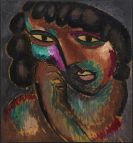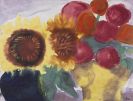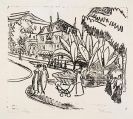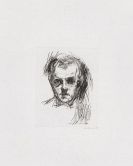
William Wauer
Oberwiesenthal/Erzgebirge
1866 -
Berlin
1962
In 1884 after he had completed his secondary school education in Dresden and Halle, William Wauer, son of a Thuringian clergyman, registered at the Dresden academy to study art. Later he transfered to the academies in Berlin and Munich.
From 1888 a very intensive and eventful part of his life followed, during which the artist lived in San Francisco, New York, Vienna, Rome, Leipzig, Dresden and other places. He worked as a publisher, art critic, feature editor and illustrator, published the monthly journal "Quickborn" and spent some time as head of the advertising department of Lingner-Werke in Dresden where he developed a famous advertising campaign for "Odol" mouthwash.
From 1900 William Wauer devoted more and more of his time to the theater. From 1905 he attended the directing class of the Berlin theater school and in 1911 sucessfully directed Herwarth Walden's pantomime "Die vier Toten der Fiametta". William Wauer's directing work is one of the first highlights of the the theater work performed by the art group "Der Sturm", which Wauer joined in 1912.
From that year Wauer also worked as film director: "Richard Wagner" was made in 1913, "Der Tunnel" in 1914-15 and "Peter Lump" in 1916. Alongside his work as a director for film and theater, the versatile artist William Wauer also dedicated himself to fine art.
In 1918 he first contributed some of his own sculptures to the 61st exhibition of the gallery "Der Sturm". William Wauer's most famous works are his portraits - H. Walden's bust is an incunable of Expressionist statuary. William Wauer's sculptures are marked by a dramatic rhythm of movement and an expressively moved, ornamental surface design. Until the gradual dissolution of the "Sturm" circle in 1924, Wauer also contributed to the "Sturm" journals, wrote books and worked at the "Sturm" art school.
In 1924 Wauer founded the "Internationale Vereinigung der Expressionisten, Kubisten, Futuristen und Konstruktivisten", which he was head of until its ban in 1933. In 1941 the Nazis classified William Wauer's art as "degenerate" and he was banned from working. After the war William Wauer's sculptures, paintings and prints were regularly shown at exhibitions. He worked as a lecturer at the West-Berlin adult education center and was member of the board of the "Verband der Berliner Bildenden Künstler".
Would you like to sell a work by William Wauer?
Infos for seller











